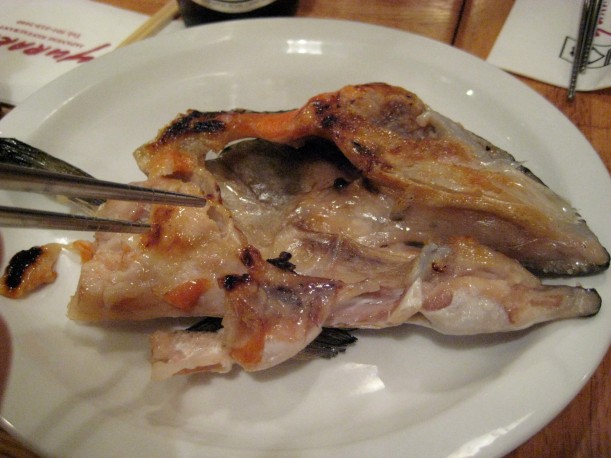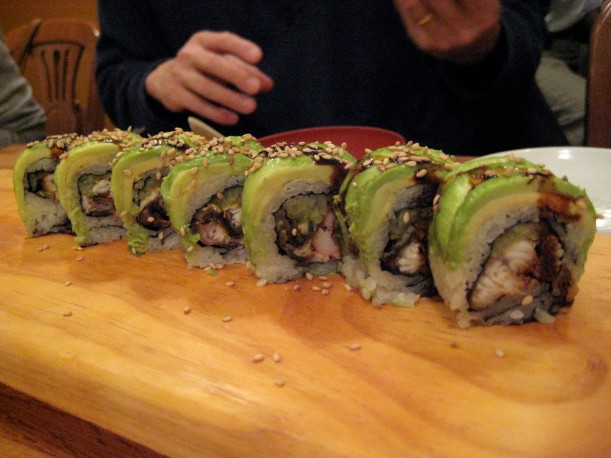When I was in Maryland, my family took me to Yuraku, a sushi place they said was tasty and very reasonable price-wise. Always the skeptic, and spoiled by the quality of fine sushi in the Bay Area, I put on my judgey mcjudgey pants to see if they were right.
It was a Saturday night, so of course there was a wait, but that was a good sign nonetheless. After we ordered, they gave us free appetizers, such as grilled fish head (tastier than it sounds) and steamed egg (aka chawanmushi).

Grilled fish head. The cheek meat is very delicate and sweet.

Chawanmushi (steamed egg). A little spartan and not the best I've had, but it was free.
When it comes to sushi, there are a few criteria I use to judge whether a restaurant is good. First, the quality/freshness of the seaweed (nori) is important if often overlooked. Fresh seaweed should be crisp, not chewy. Second, in nigiri (sliced fish over rice), the fish-to-rice ratio is crucial. Traditionally, it should be a 4:1 ratio but that’s hard to find in the States. I’m pretty happy with 2.5 or 3:1 ratio. Third, the place should have a sushi bar where customers can sit and watch the sushi get made. I’m especially impartial to small places with less than 10 tables, maybe because it implies quality over quantity. Sushi places get bonus points if the California roll is made with real crab meat instead of imitation crab meat, and also if the ginger and/or wasabi are not neon in color. (Ginger should be a pale pink or yellow; wasabi should be more mustard yellow than green.)

California rolls, Eel and avocado roll, Spider roll, Eel nigiri, Salmon nigiri, and Yellowtail nigiri

Dragon roll (just looking at the generous slices of avocado makes my mouth water...)
Like my sister said, Yuraku was indeed a good place offering good value. The nigiri fish-to-rice ratio was decent (maybe 2+:1), the fish was fresh, and the rolls were delicious. Yuraku didn’t score any bonus points, but for the five of us (3 adults, one 10 year-old, and one toddler), the bill came out to a little over $50 (sushi plus one large beer), which was very reasonable. So, if you find yourself in Germantown, Maryland craving sushi, I’d highly recommend Yuraku.







